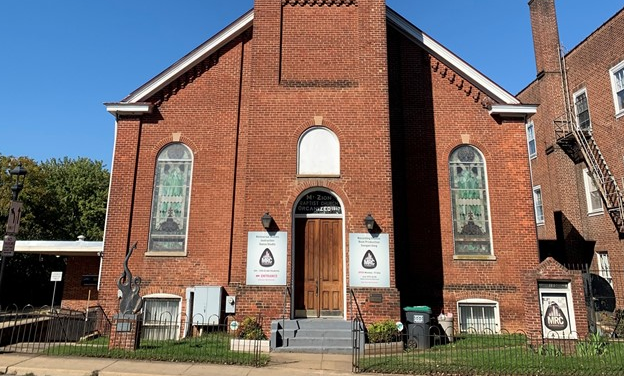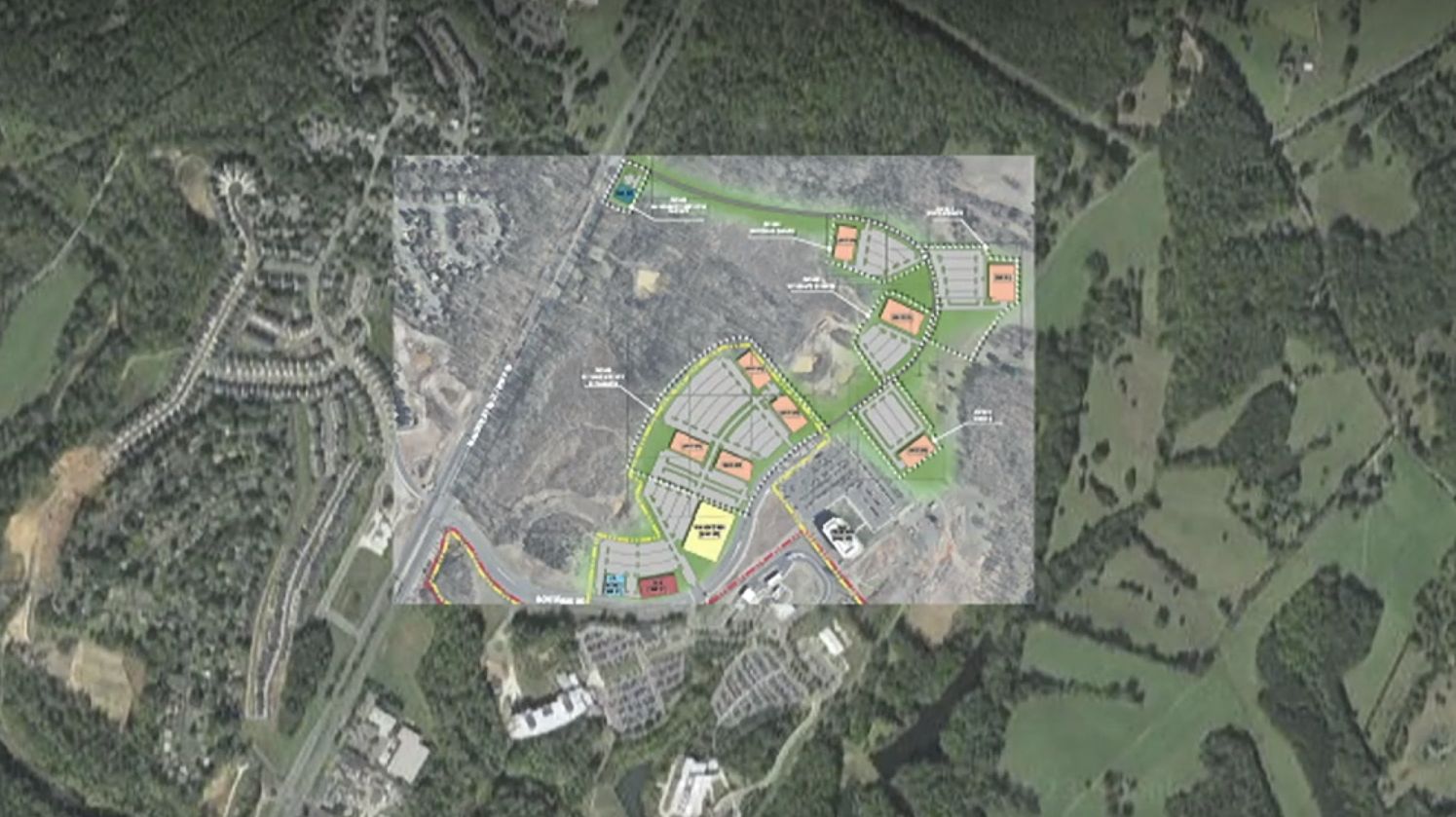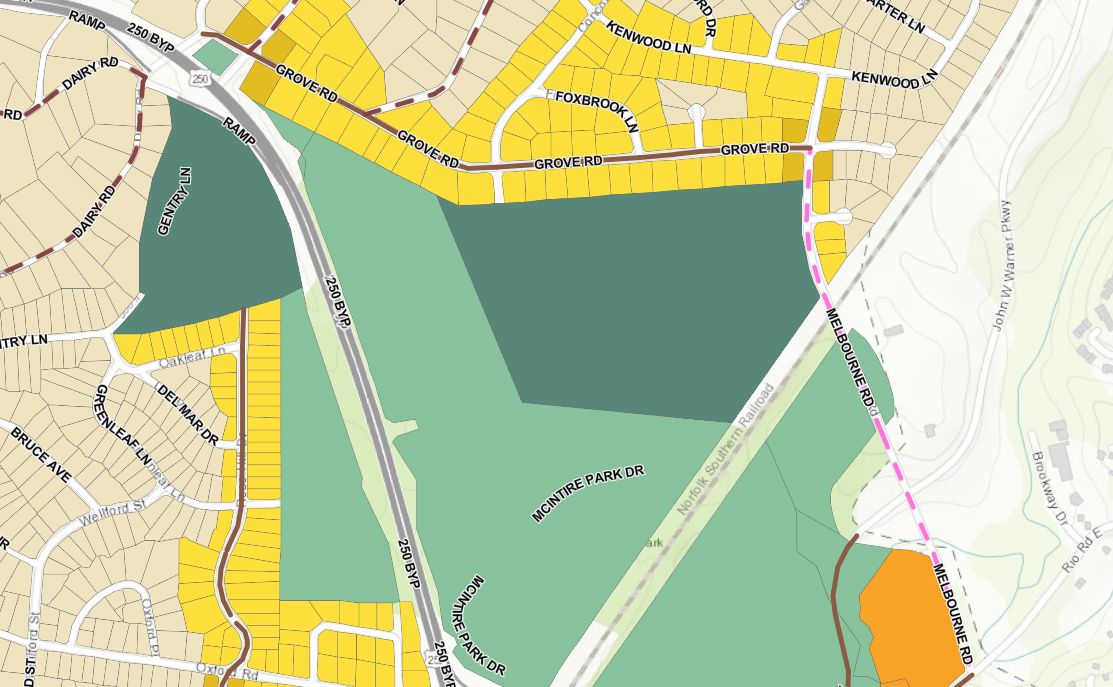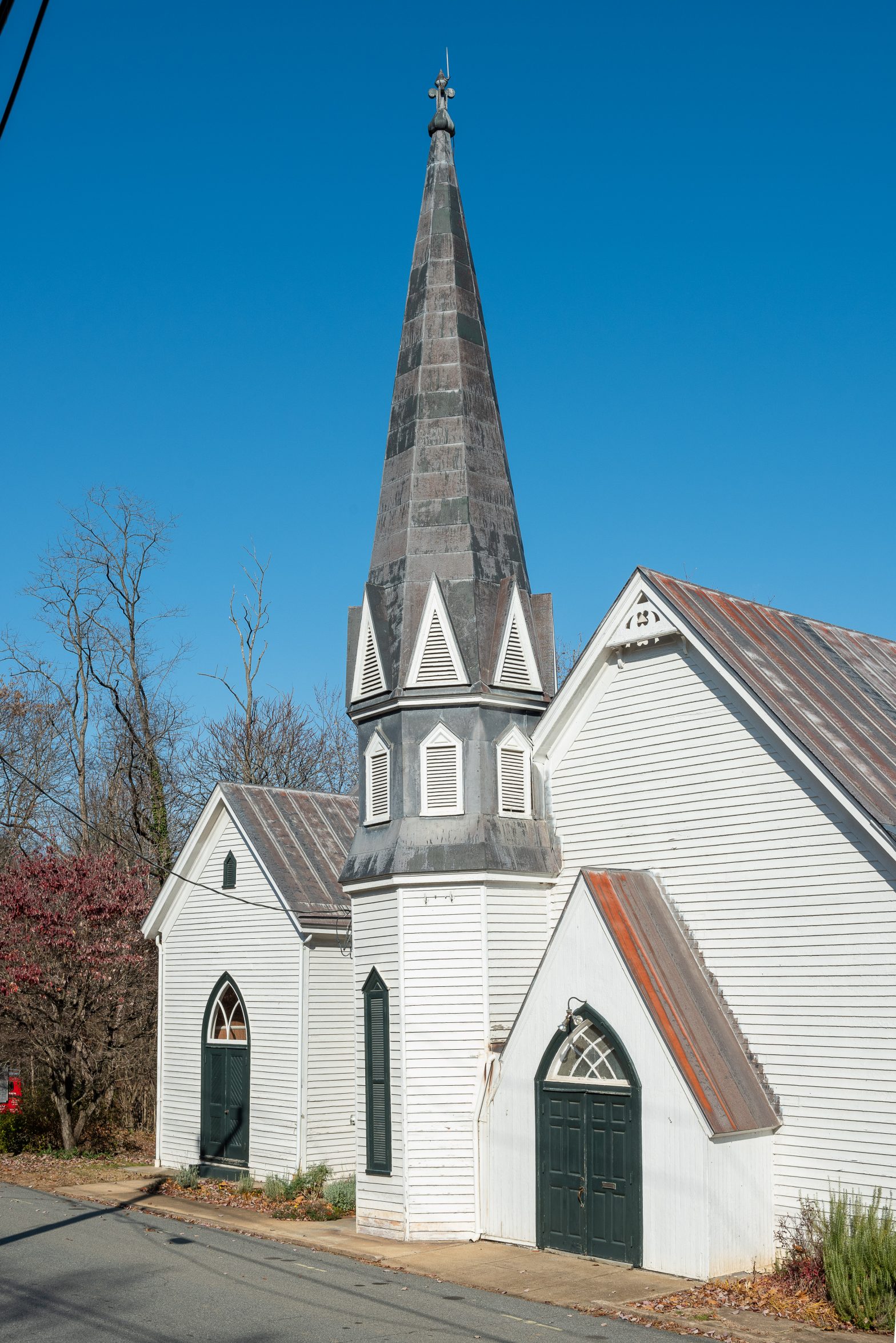With a new zoning code on the horizon, Charlottesville’s built environment is poised to continue its transformation into a slightly larger urban community. There are many corners that could change in the near future due to the possibility of new ownership, as well as public investment.
Consider the intersection of Ridge and West Main streets, where two high-profile buildings are up for sale and where the Virginia Department of Transportation has funded future infrastructure improvements that could make it safer to walk or bicycle.
For many years, the former Mount Zion Baptist Church at 105 Ridge Rd. has been home to the Music Resource Center. The building is on the market with an asking price of $1.875 million. A flier put together by sales agent Cushman & Wakefield / Thalhimer describes it as a “charming and beautiful historic” building that’s “prime for restaurant, event space, or office space” and “highly accessible and visible.”
The cost to renovate the late 19th-century structure could be partially covered by the use of historic tax credits.
The president of Preservation Piedmont says she could envision many potential adaptive reuses of the structure, and pointed out that the former church is an important part of the cultural heritage of the Black community.
“Those adaptive uses could complement continued regeneration of Ridge/West Main,” says Genevieve Keller. “It is an important visual point of identity that warrants a use that continues to honor and respect its historic role in local history and generations of local African American families.”
Potential buyers might also want to take a look at what’s slated nearby.
In January, a national firm called Twenty Lakes Management LLC purchased the former Greyhound station on West Main St. for $2.42 million. The property is now on the market again with the price listed as negotiable.
Around 22,000 vehicles a day travel past this corner, according to city traffic engineer Brennen Duncan.
To the south, city transportation officials are combining two separate projects to make both Ridge Street and the Fifth Street corridor safer for cyclists and pedestrians.
The now-canceled West Main Streetscape included plans to alter the intersection at Ridge Street. There are also no plans to remove the plinth where the Lewis & Clark statue stood until two years ago.
There are no major placemaking initiatives for that corner. The property is on the southern edge of the Starr Hill Vision Plan, an initiative of the New Hill Development Corporation. However, that project suggests more focus on City Yard, the Jefferson School African American Heritage Center, and the residential neighborhoods tucked off of West Main Street.
Potential buyers should also note that the future zoning code will be different from what was revealed in February. The initial map designated this property as something called CX-8, which would have allowed buildings between eight and 10 stories. But the new zoning map that comes out this week will reportedly reduce that to CX-5, which allows between five and seven stories.
There’s likely to be one new building nearby—City Council will consider a request from the Salvation Army for a special use permit to expand its building at 205 Ridge St. The Planning Commission recommended approval last month.









